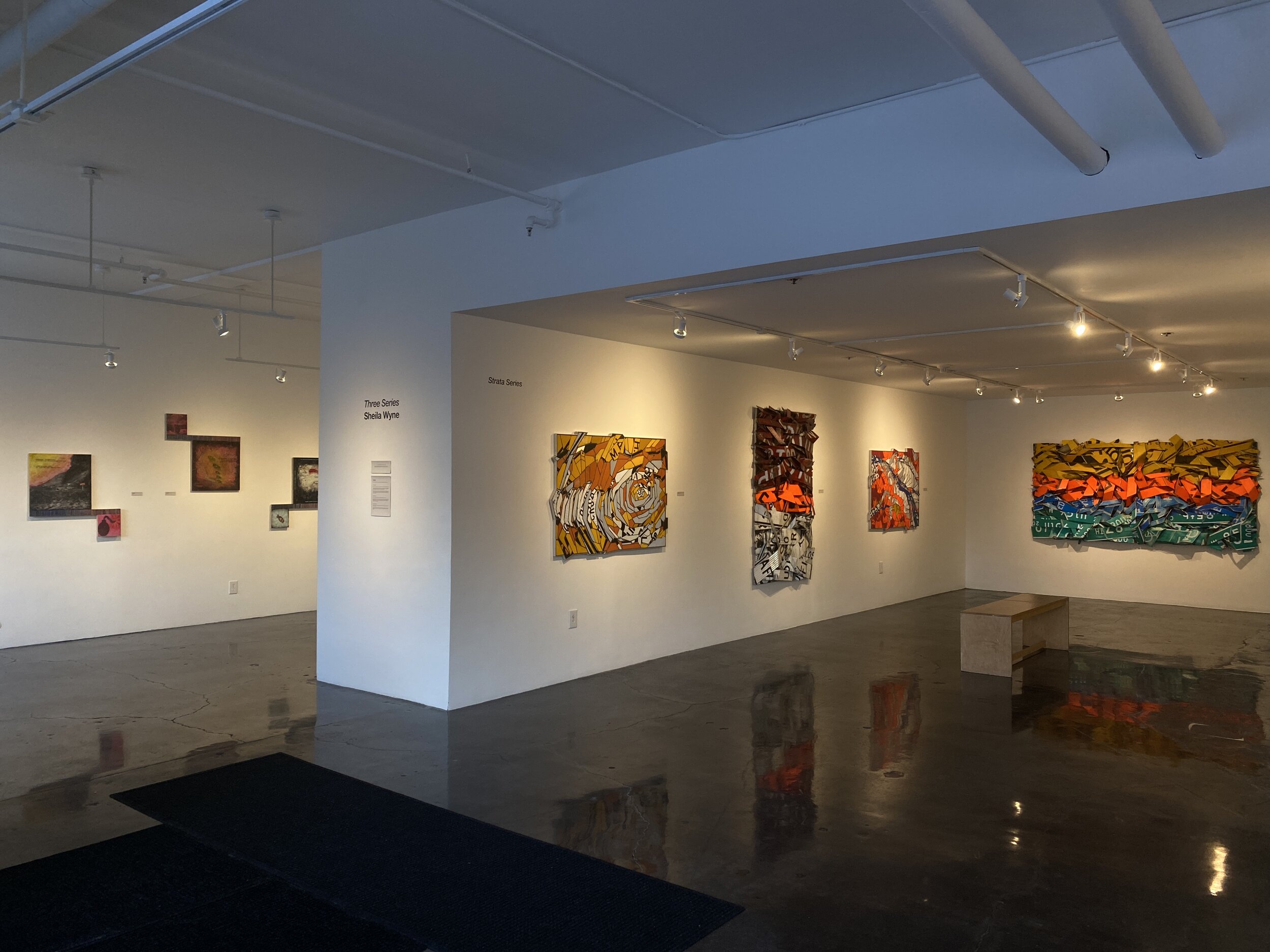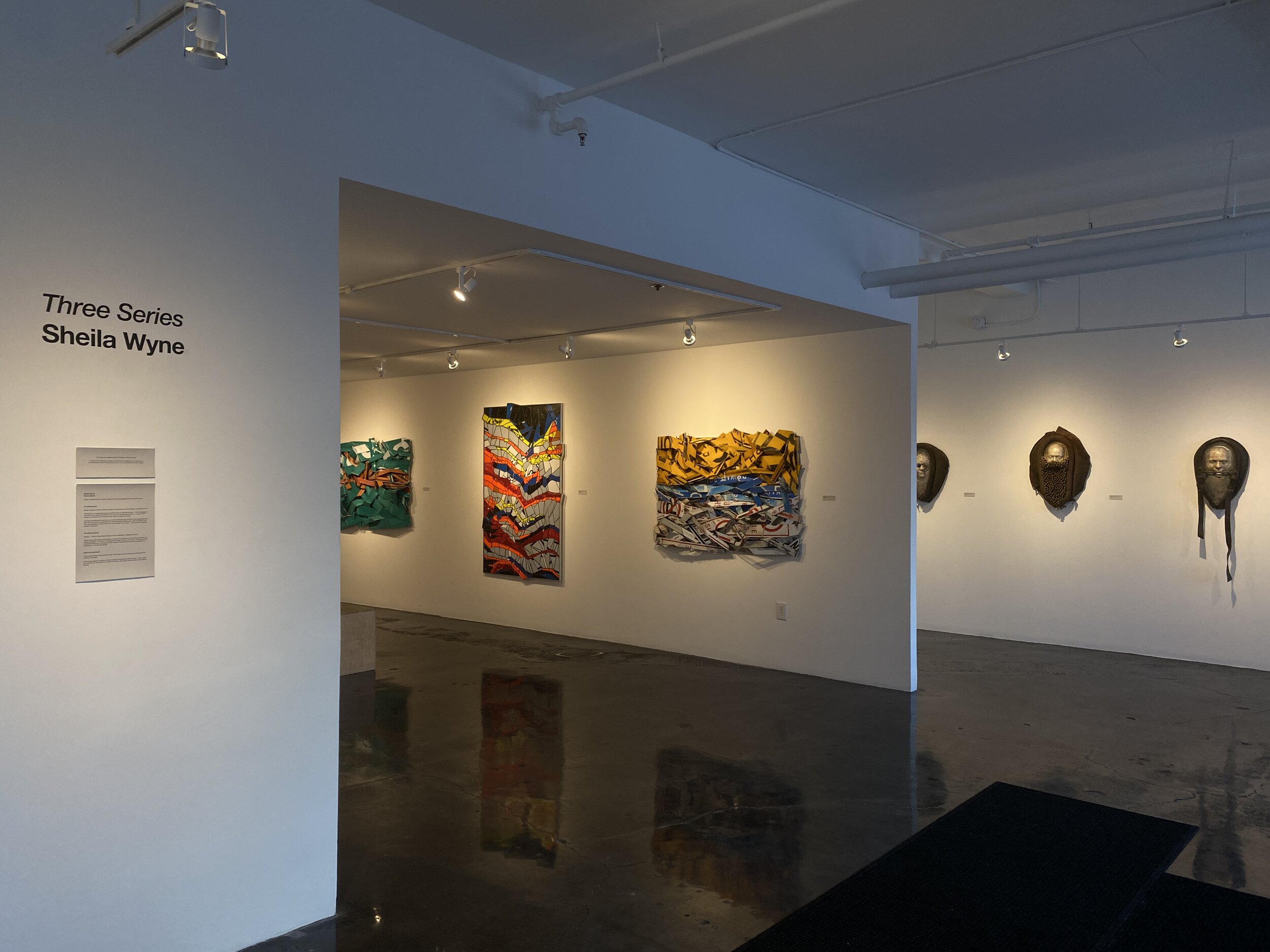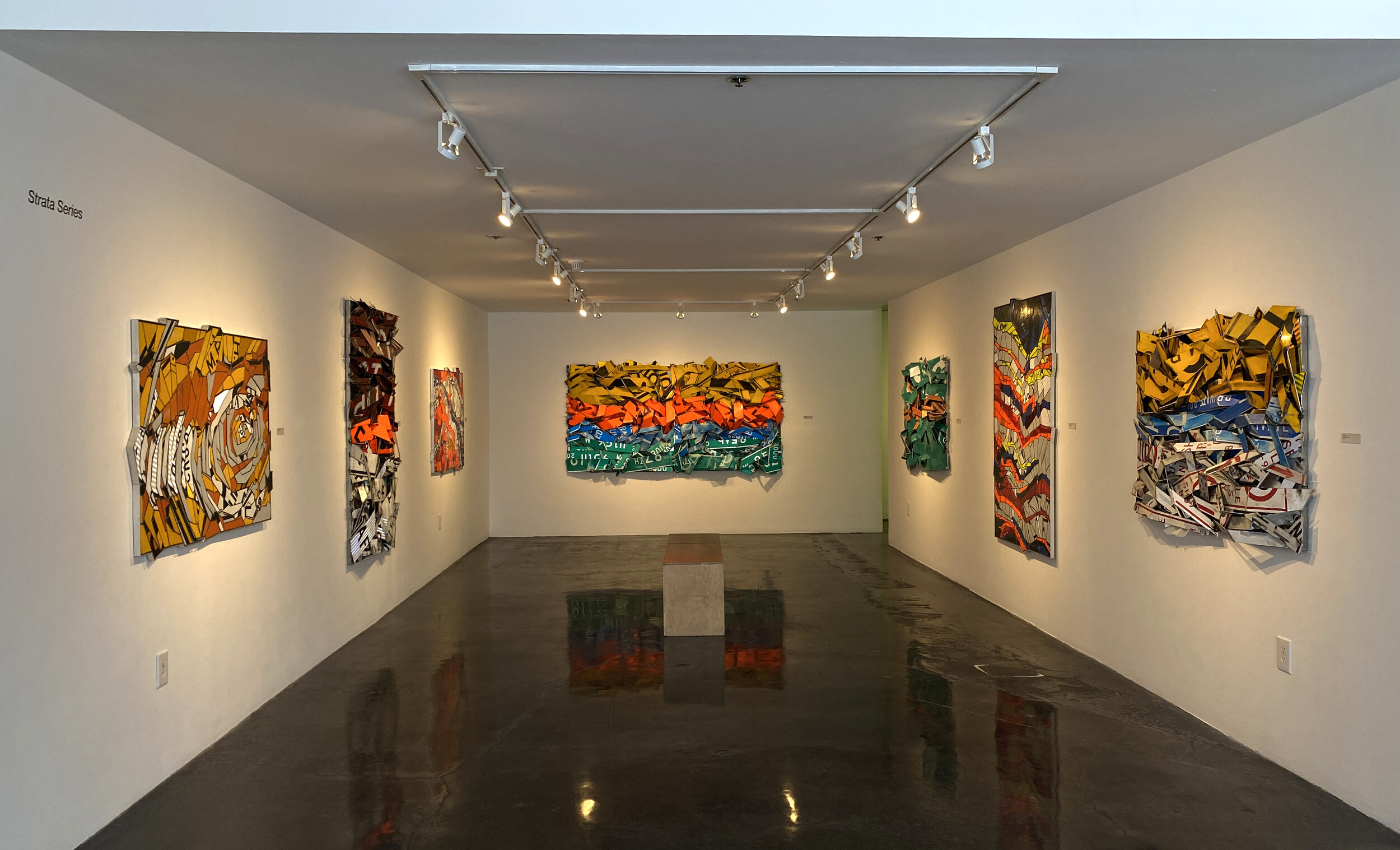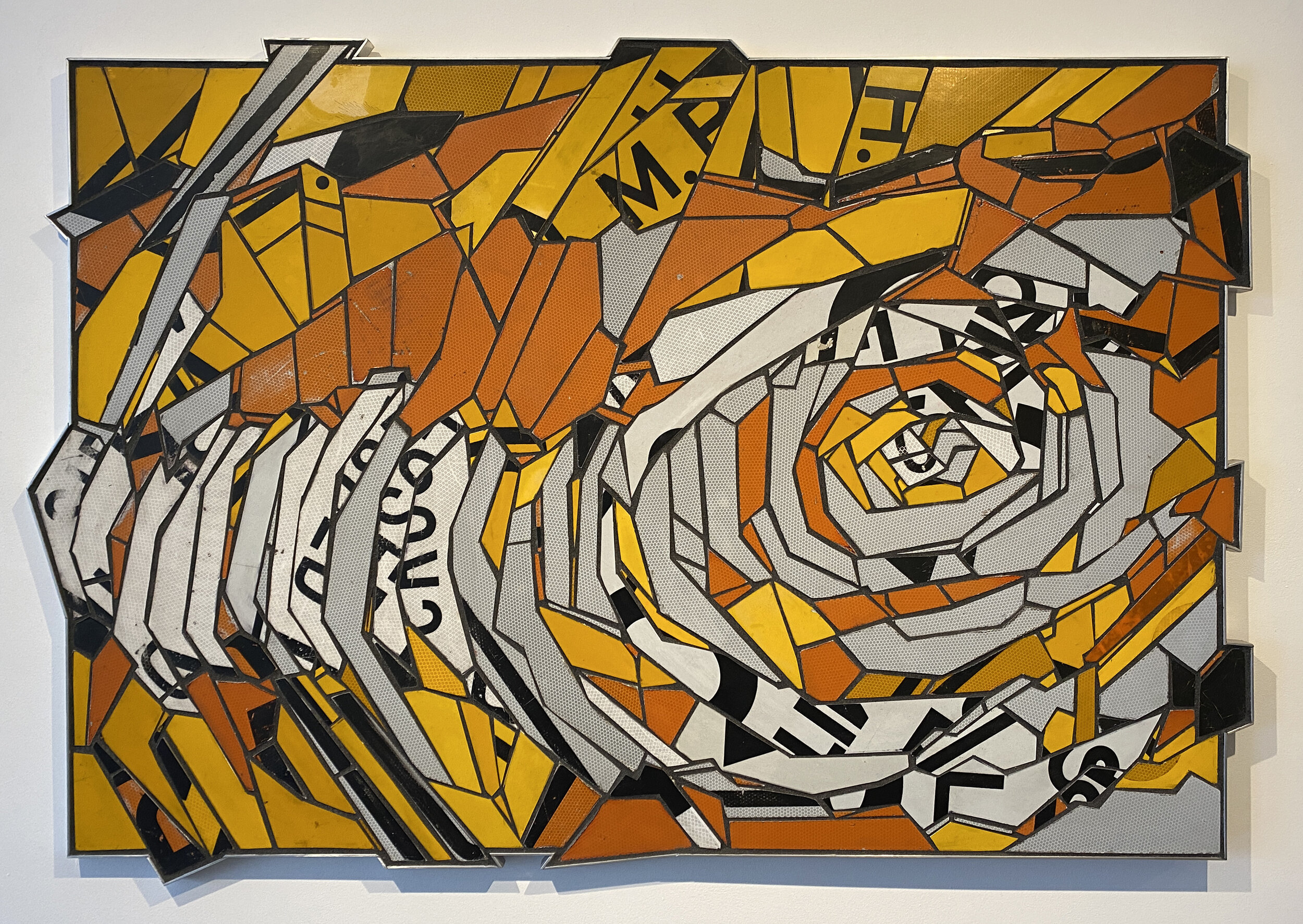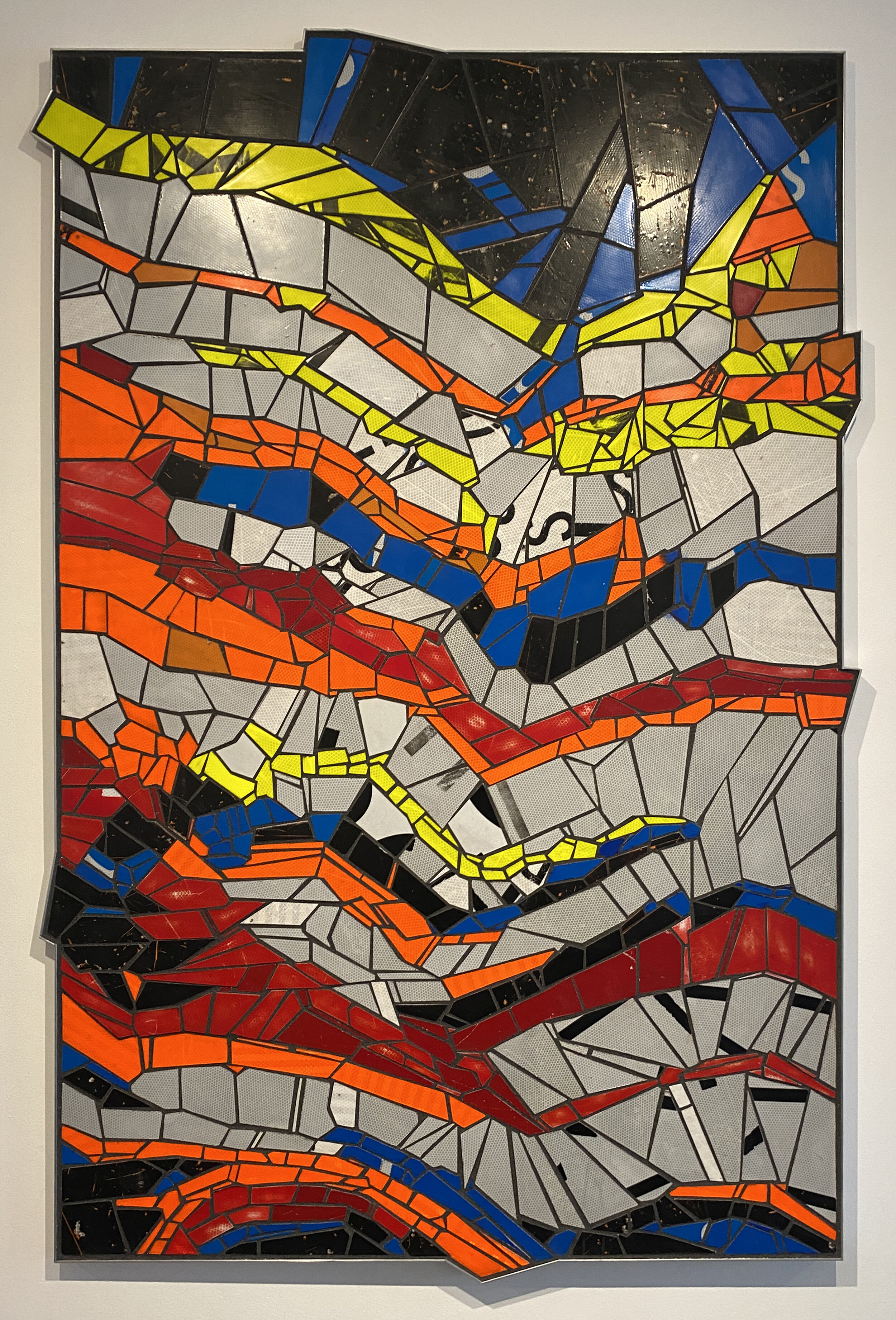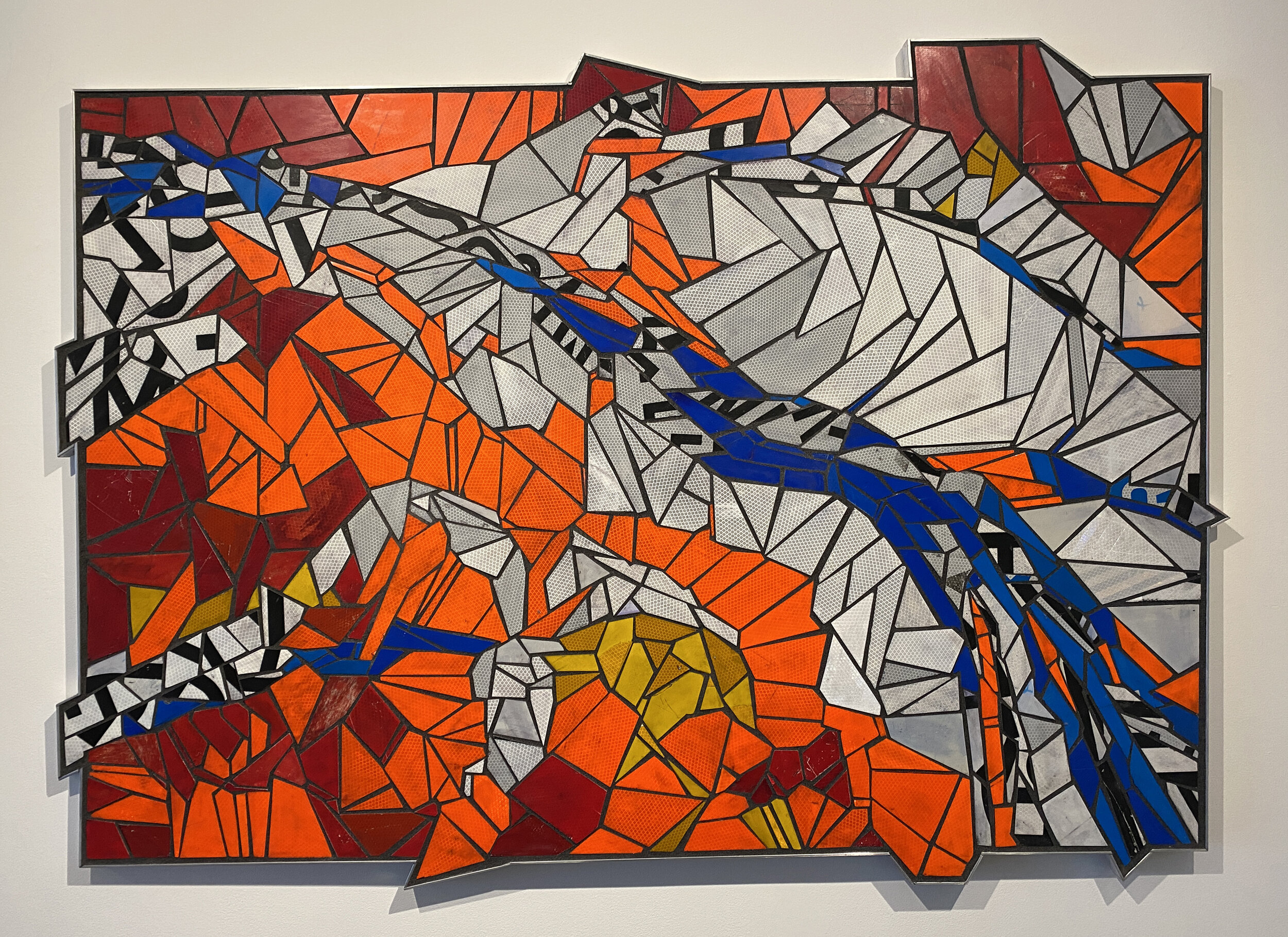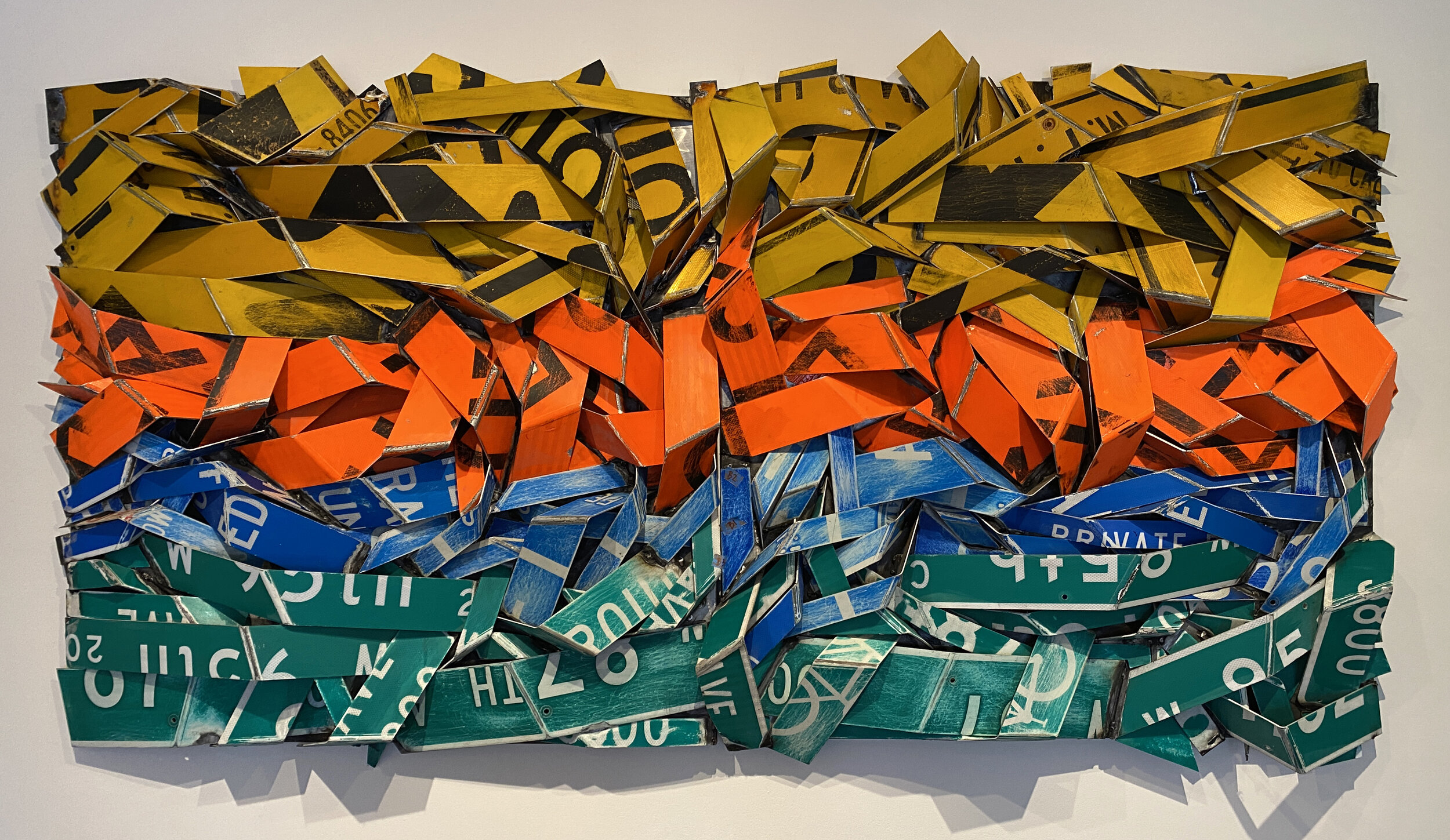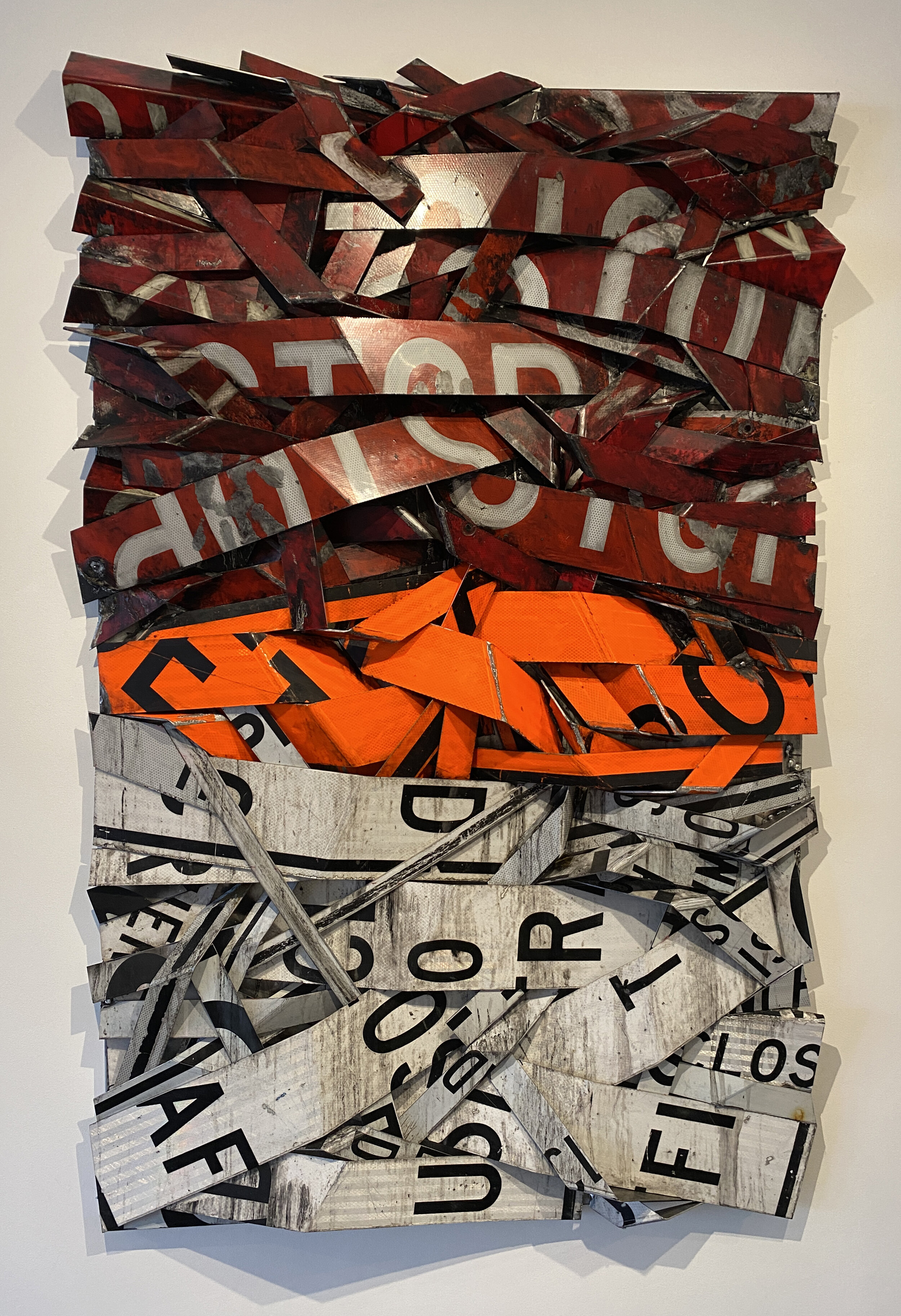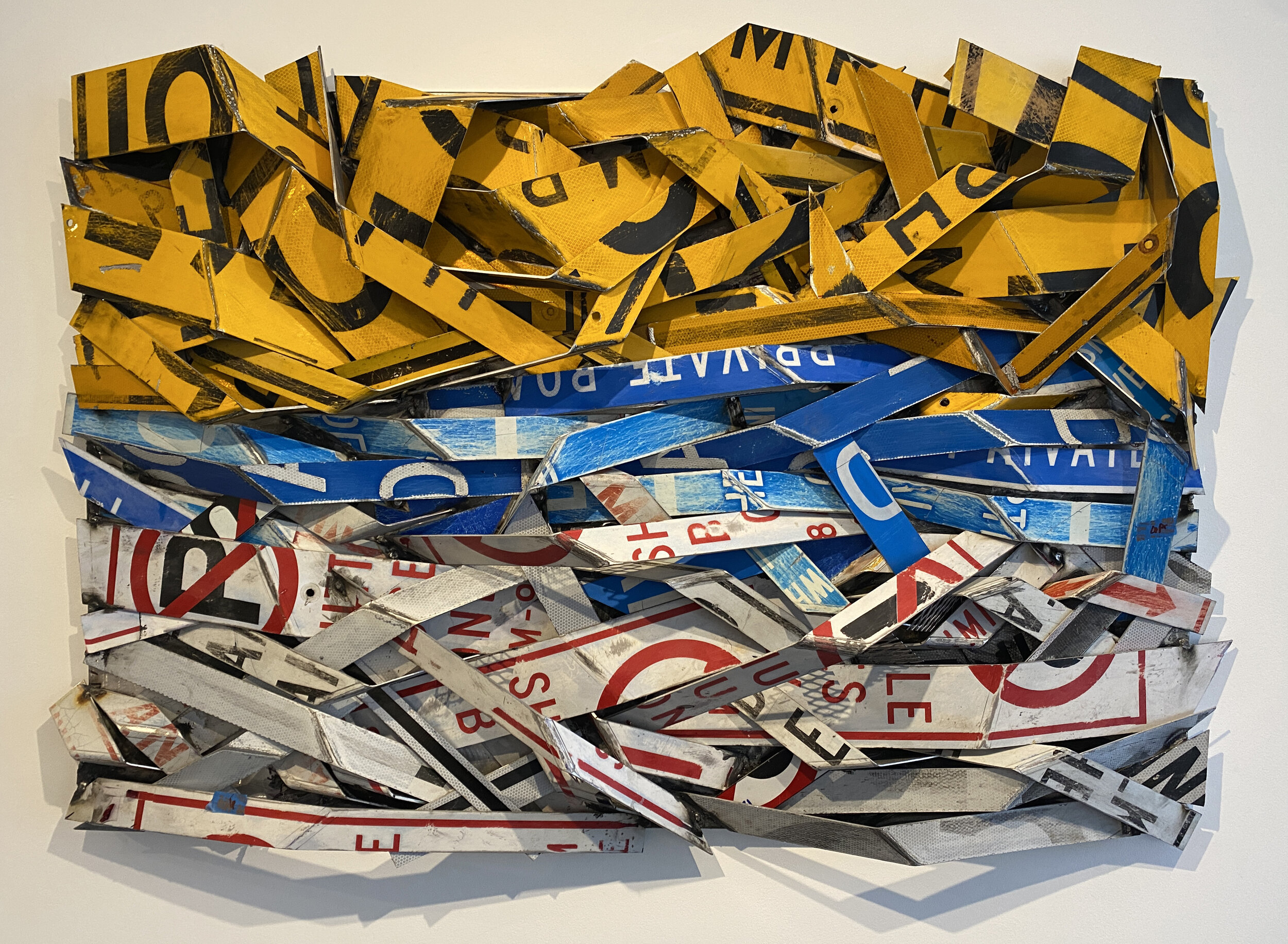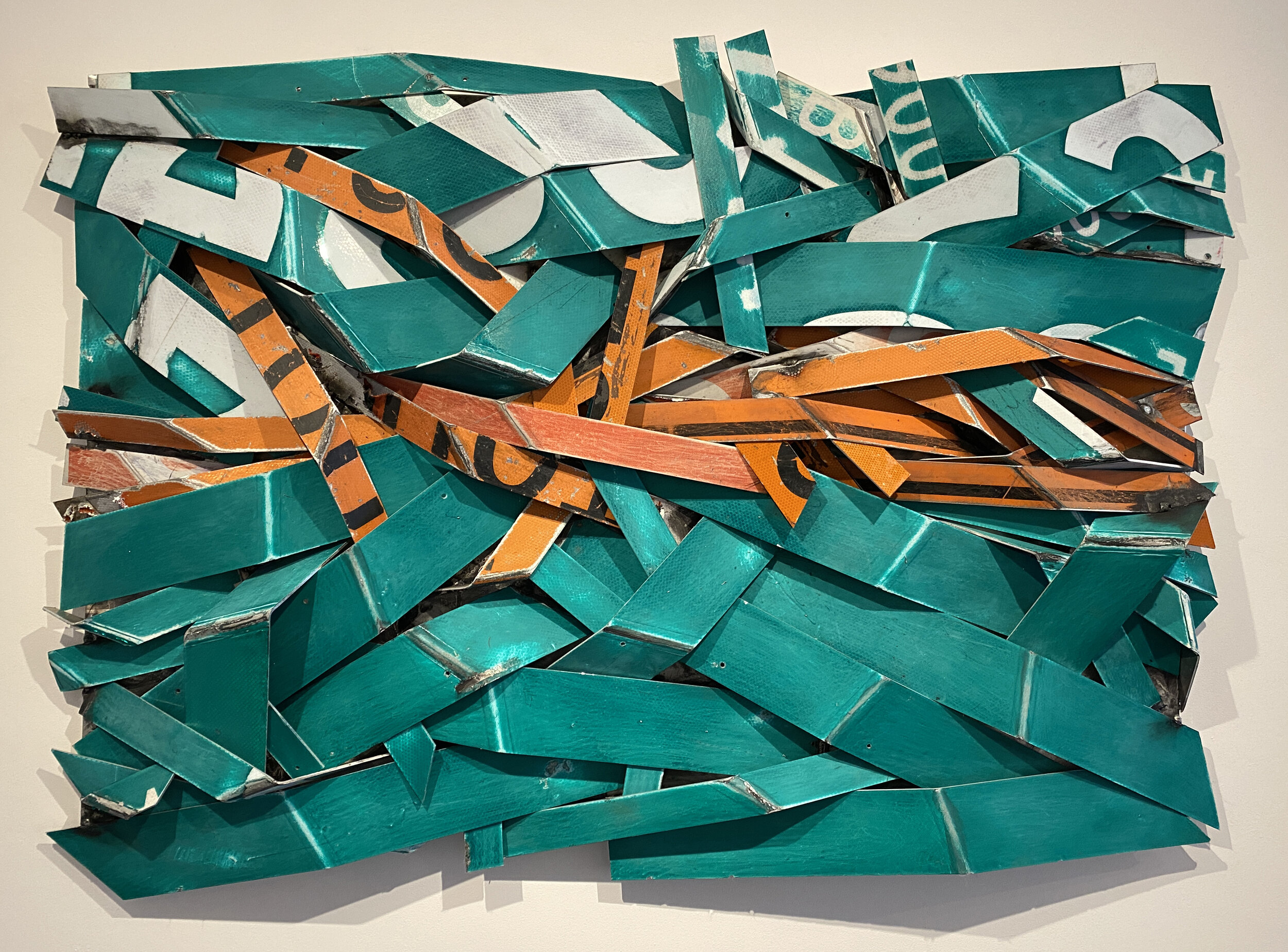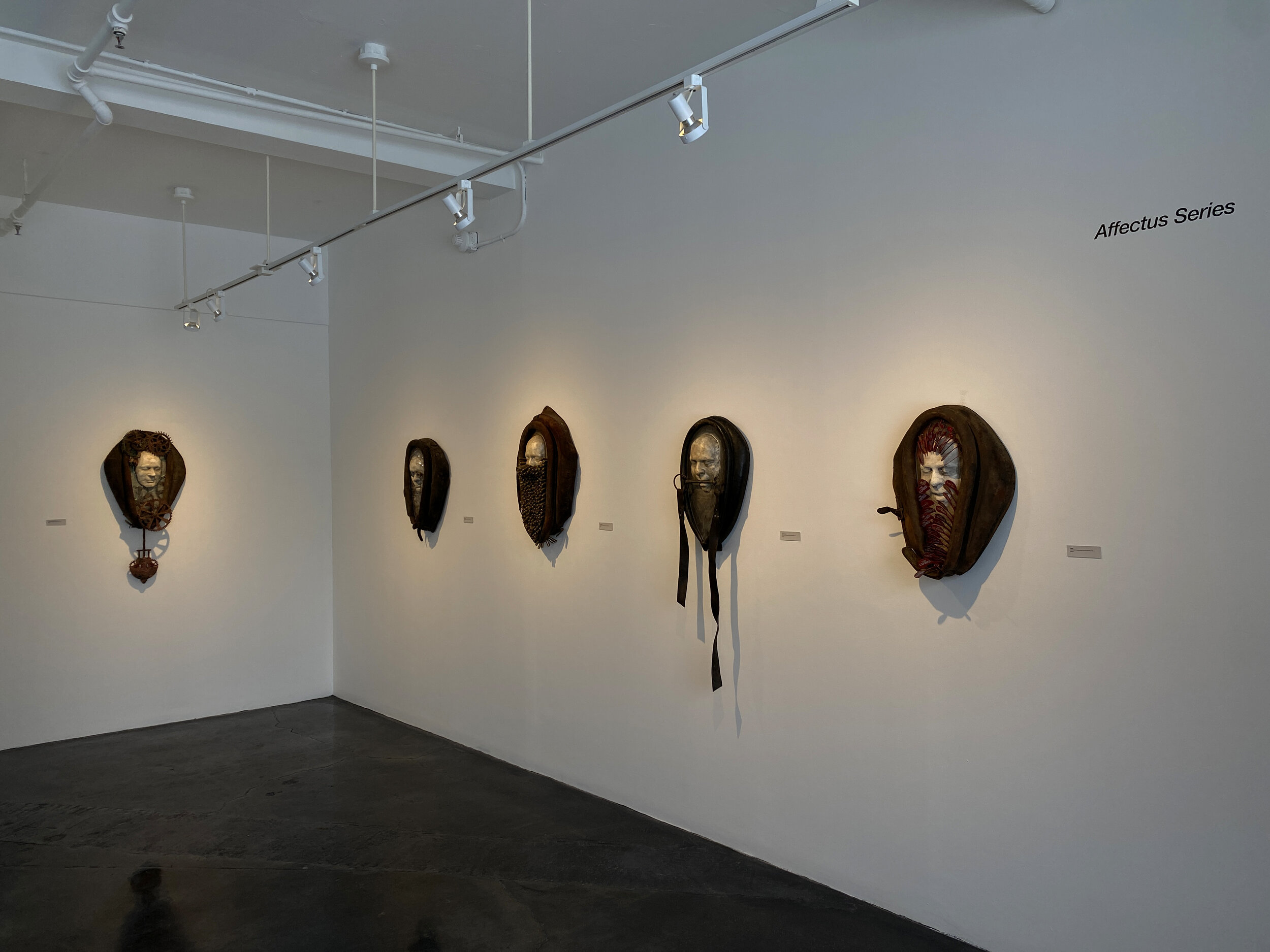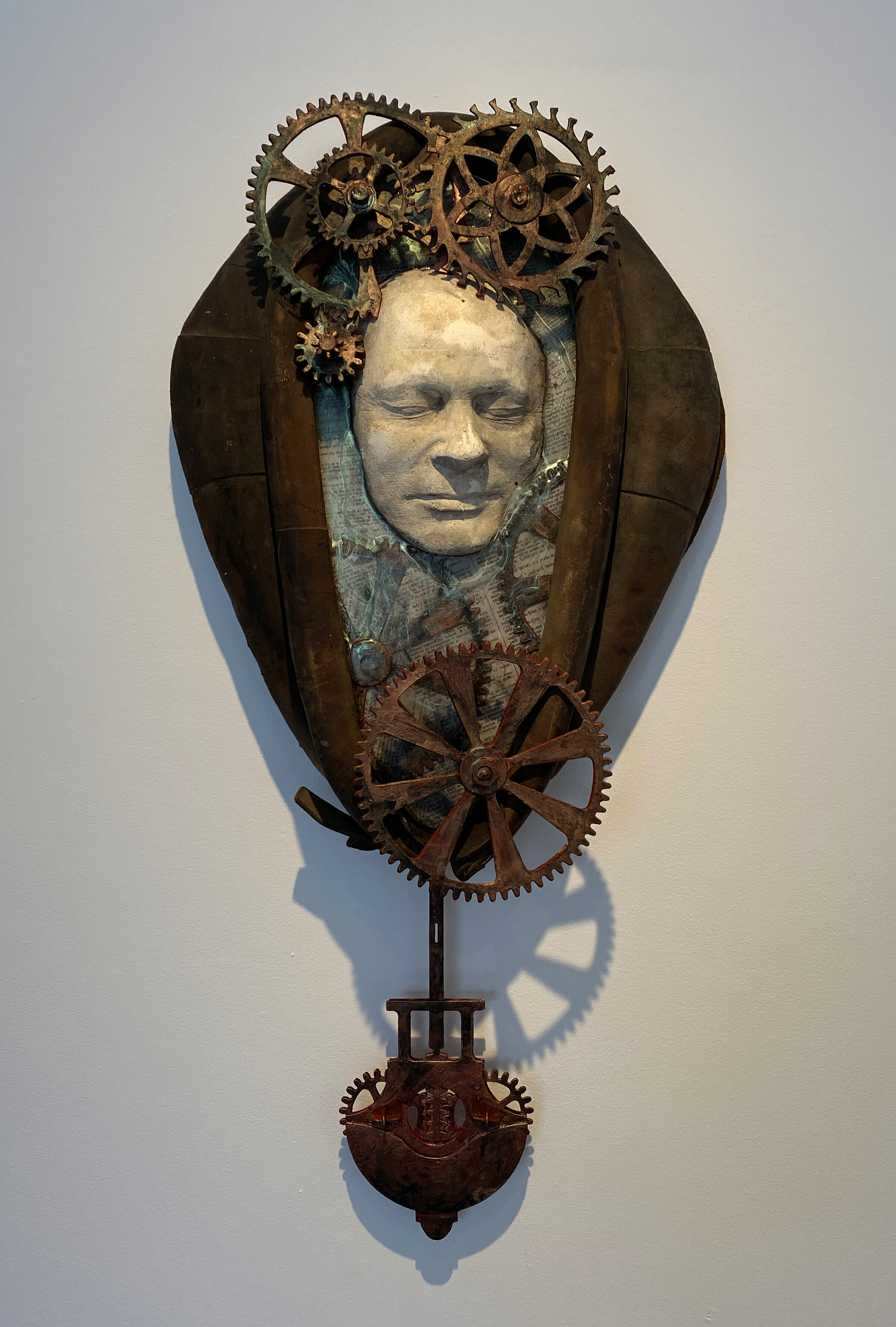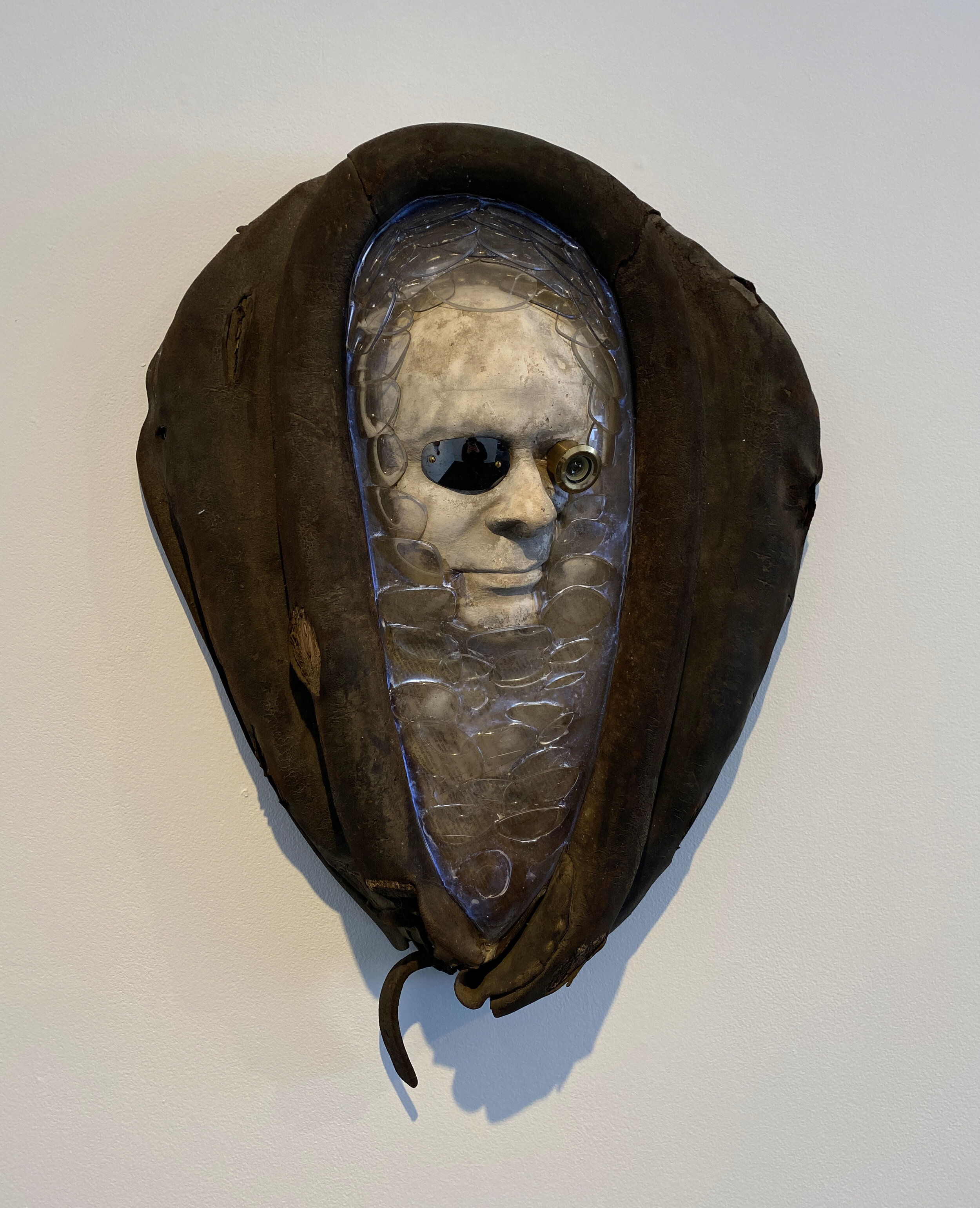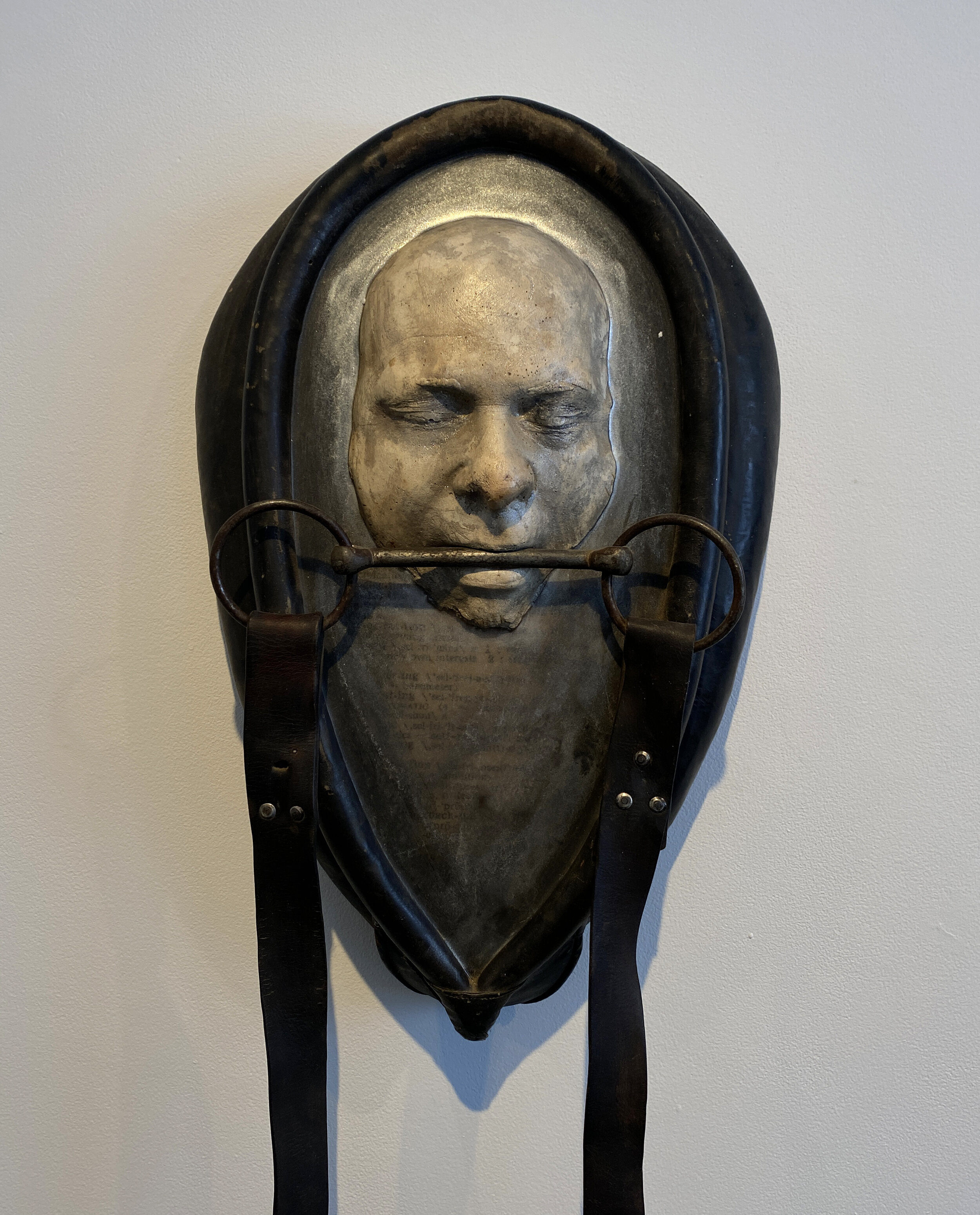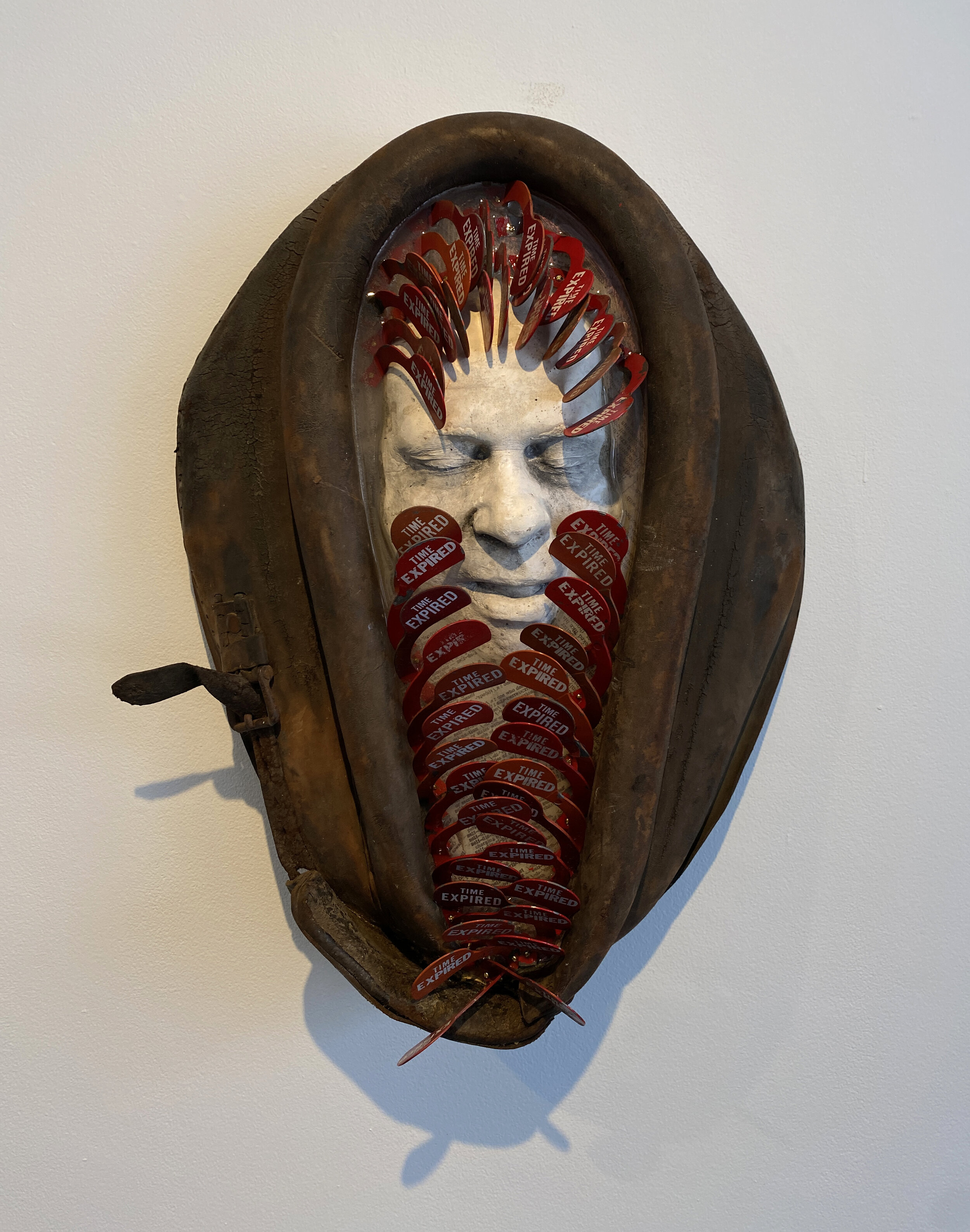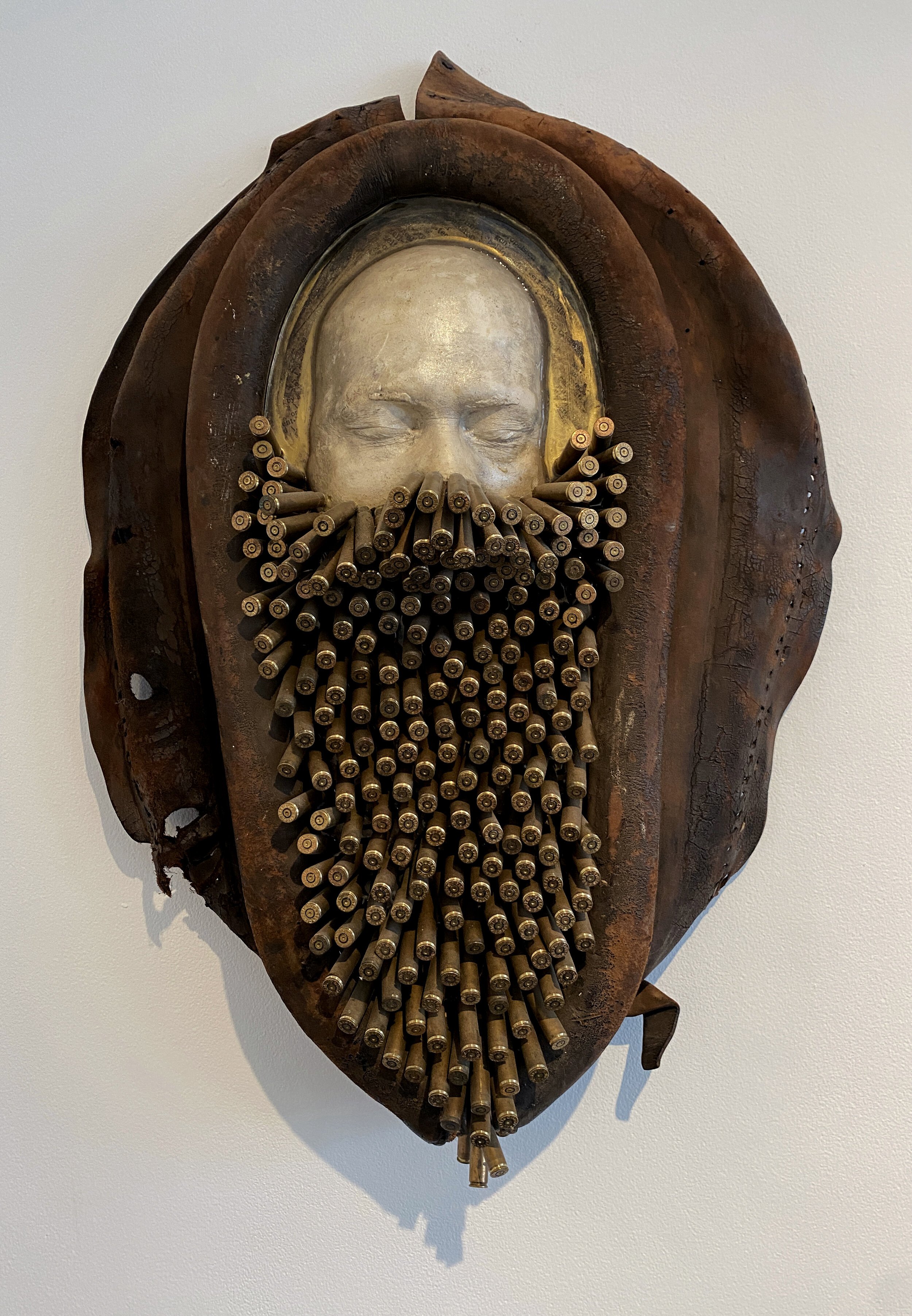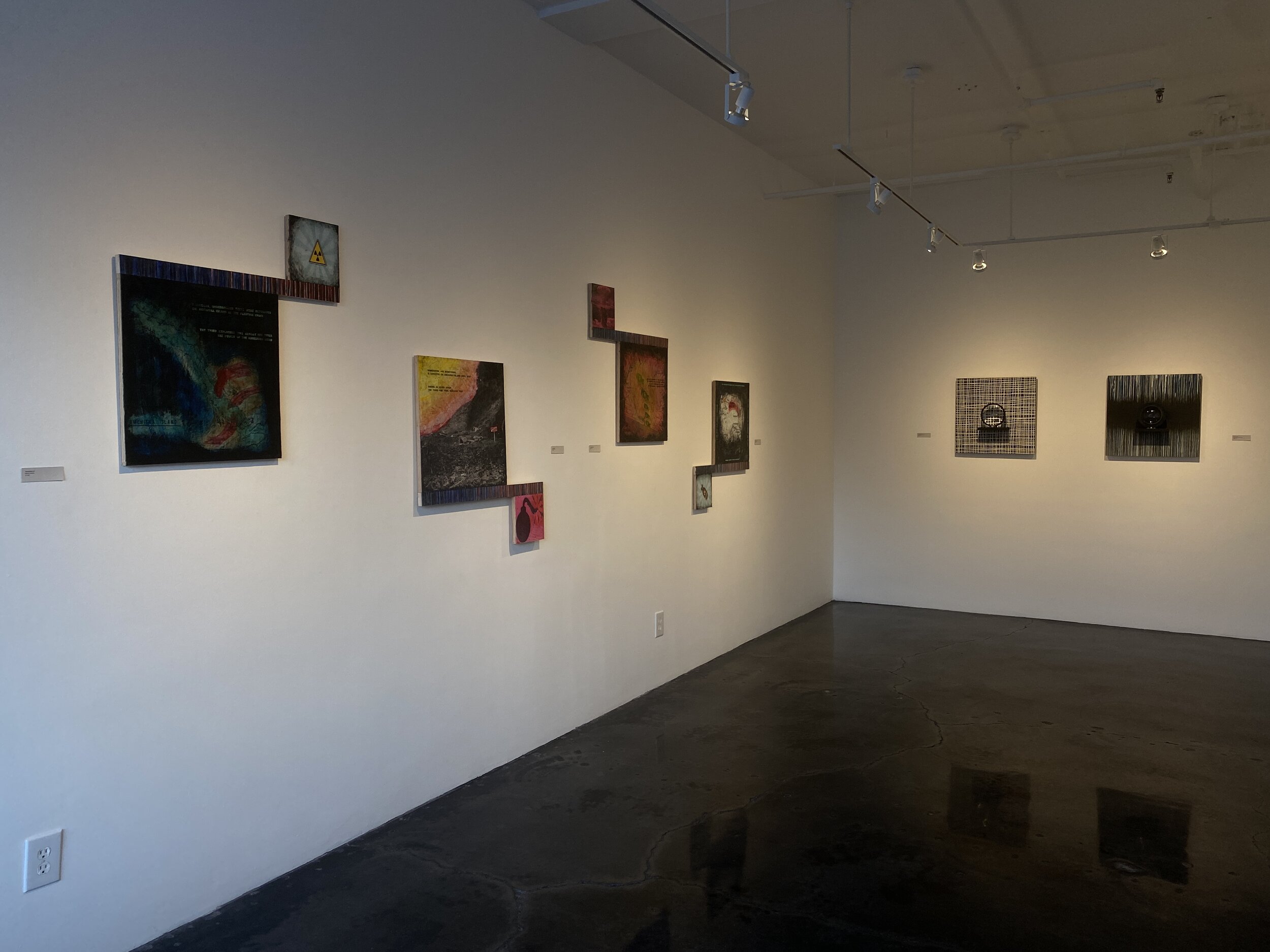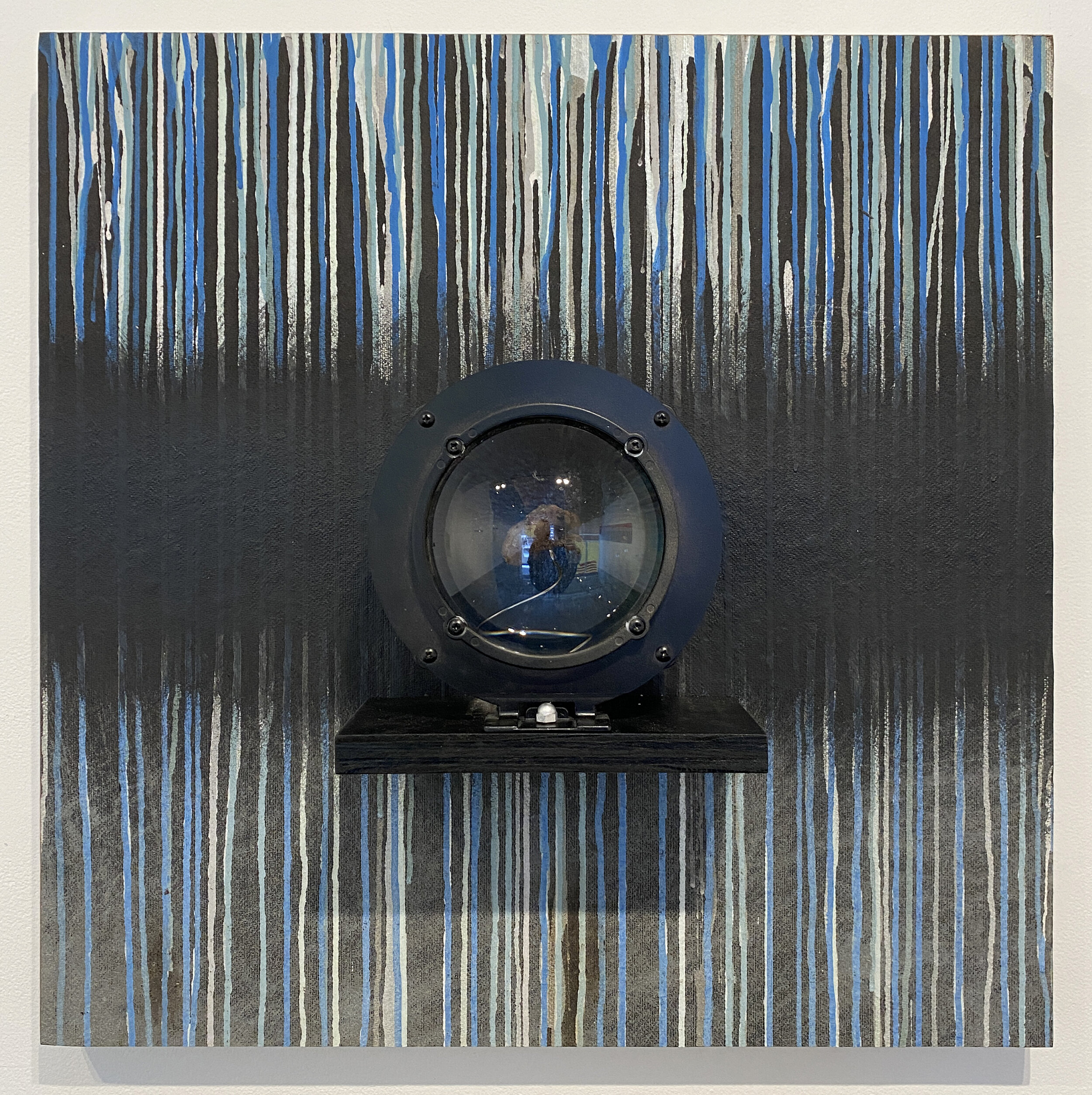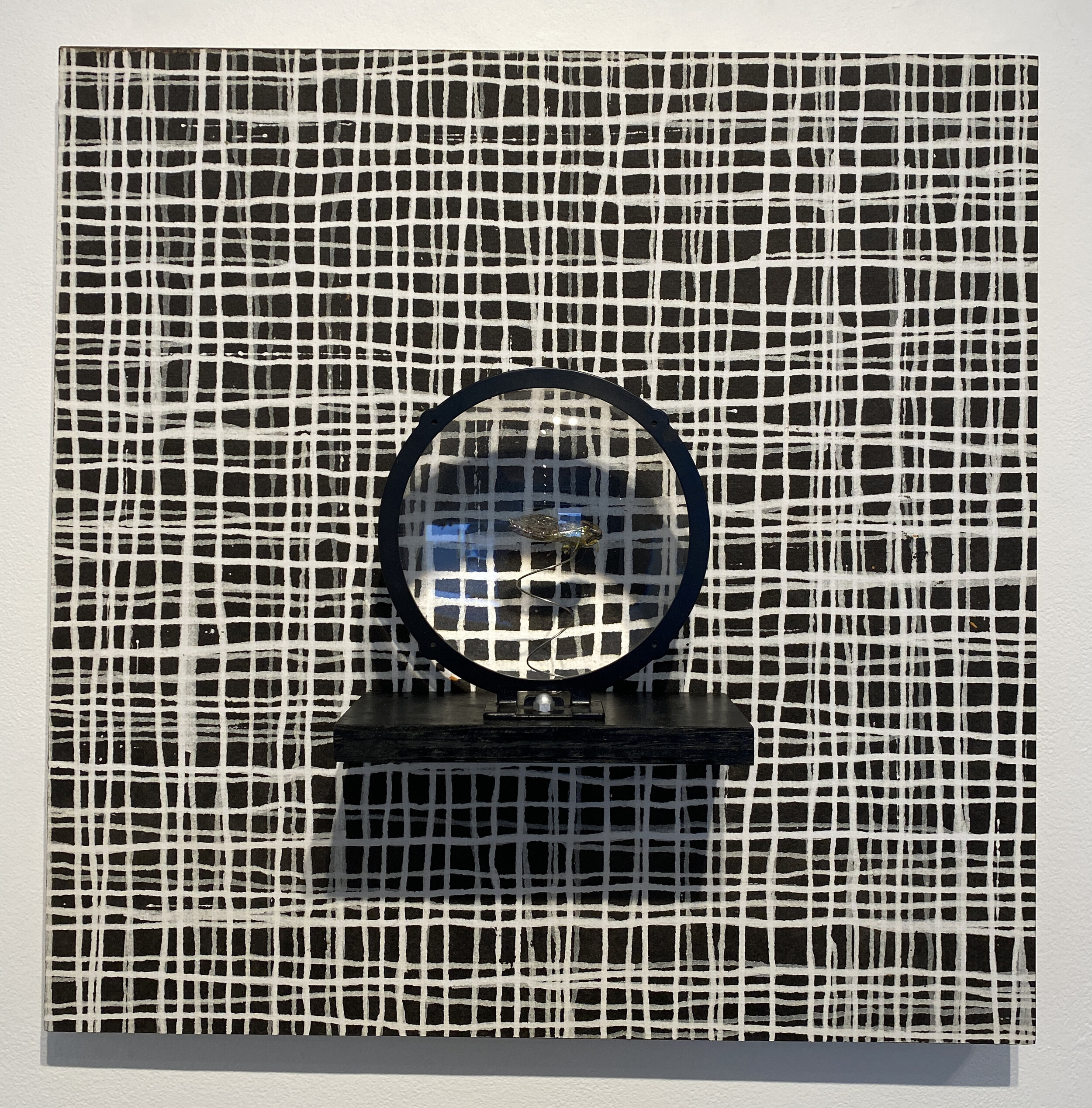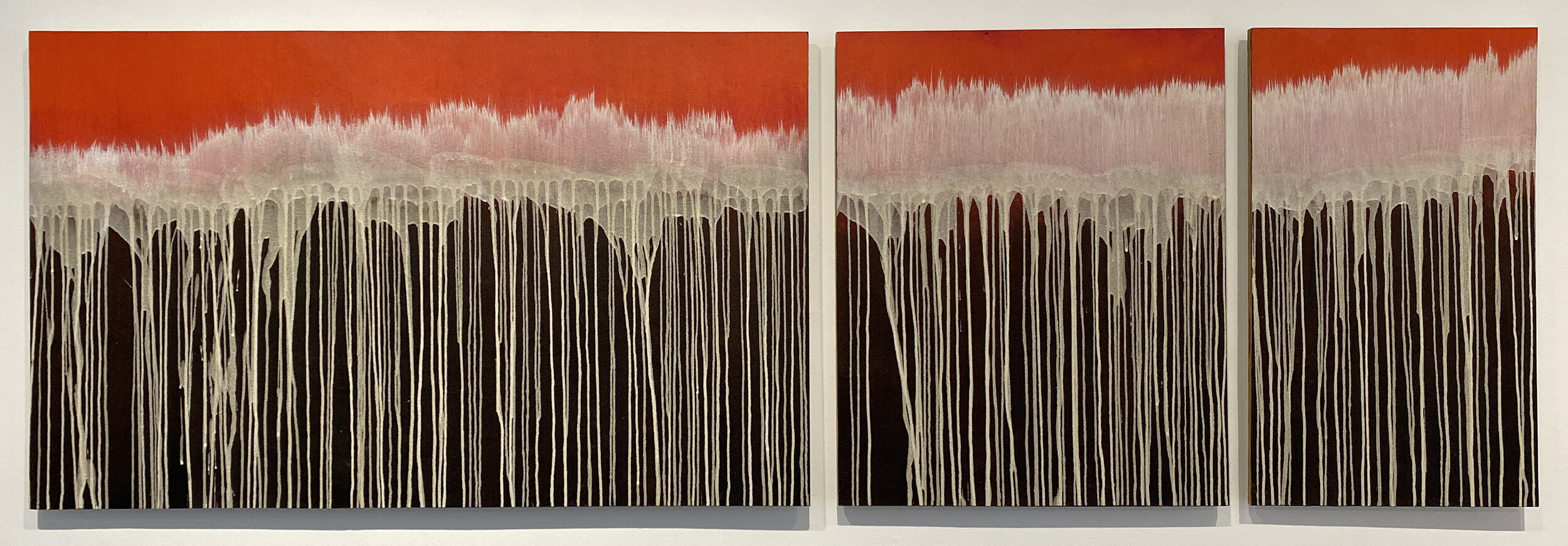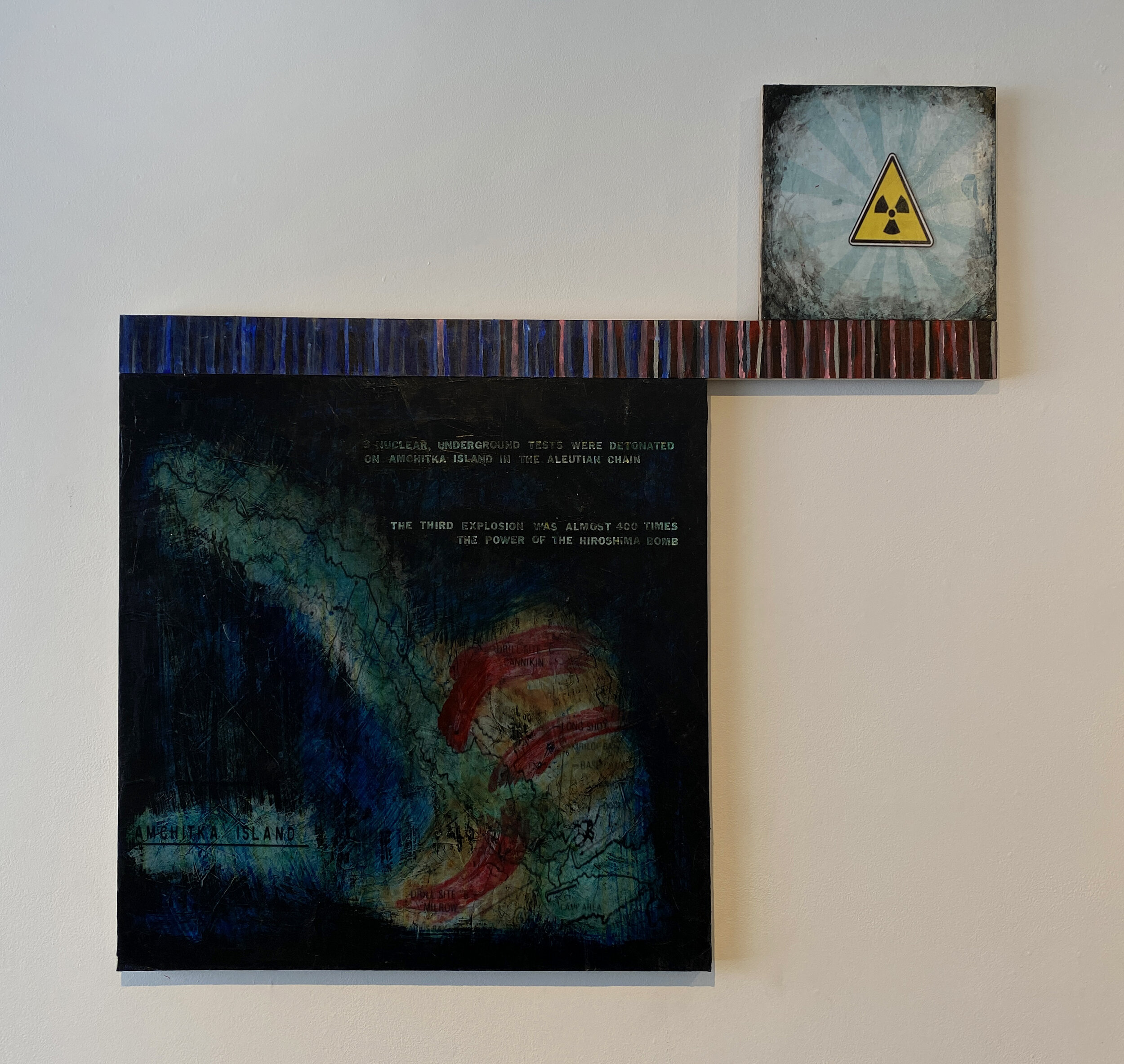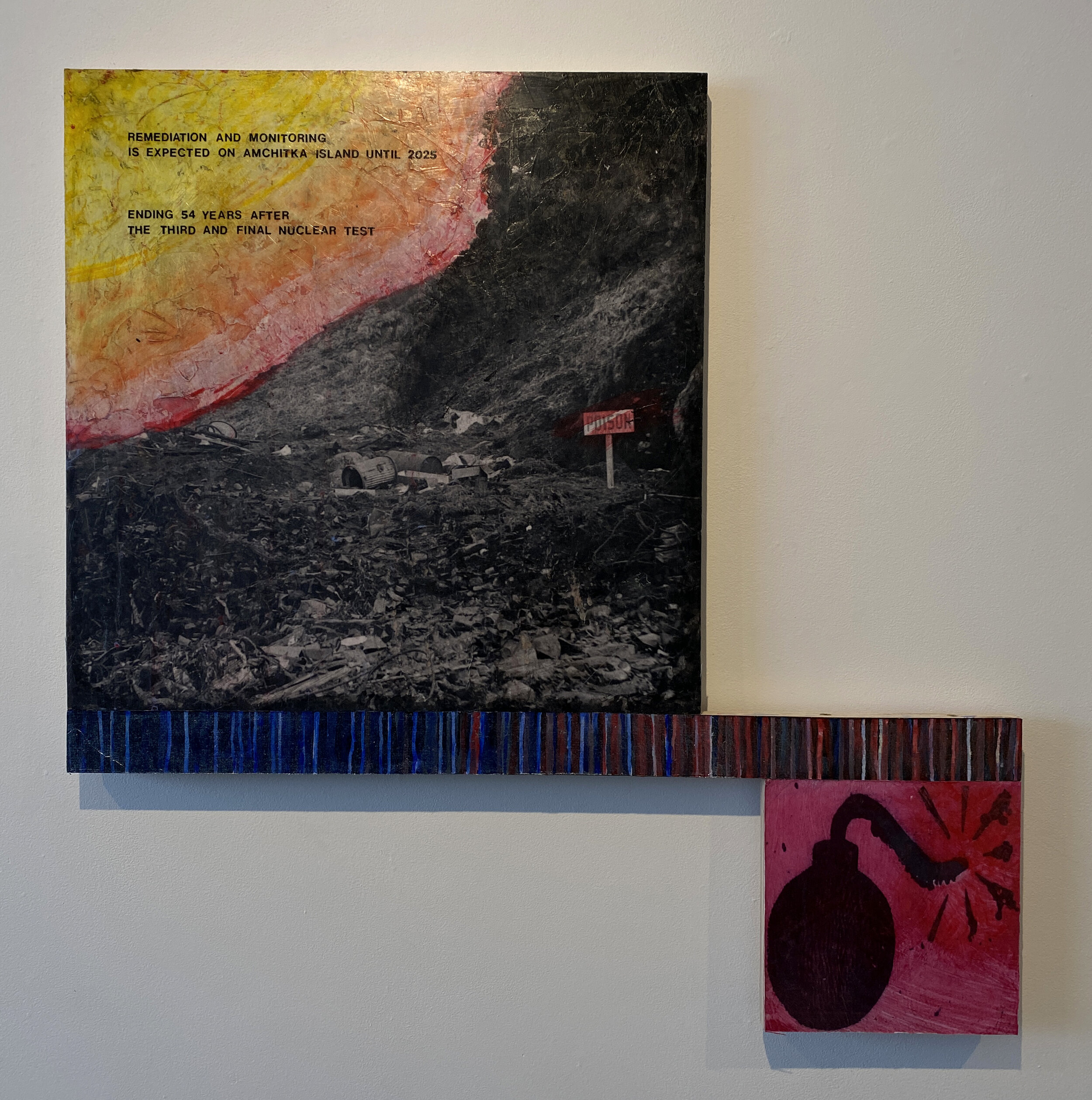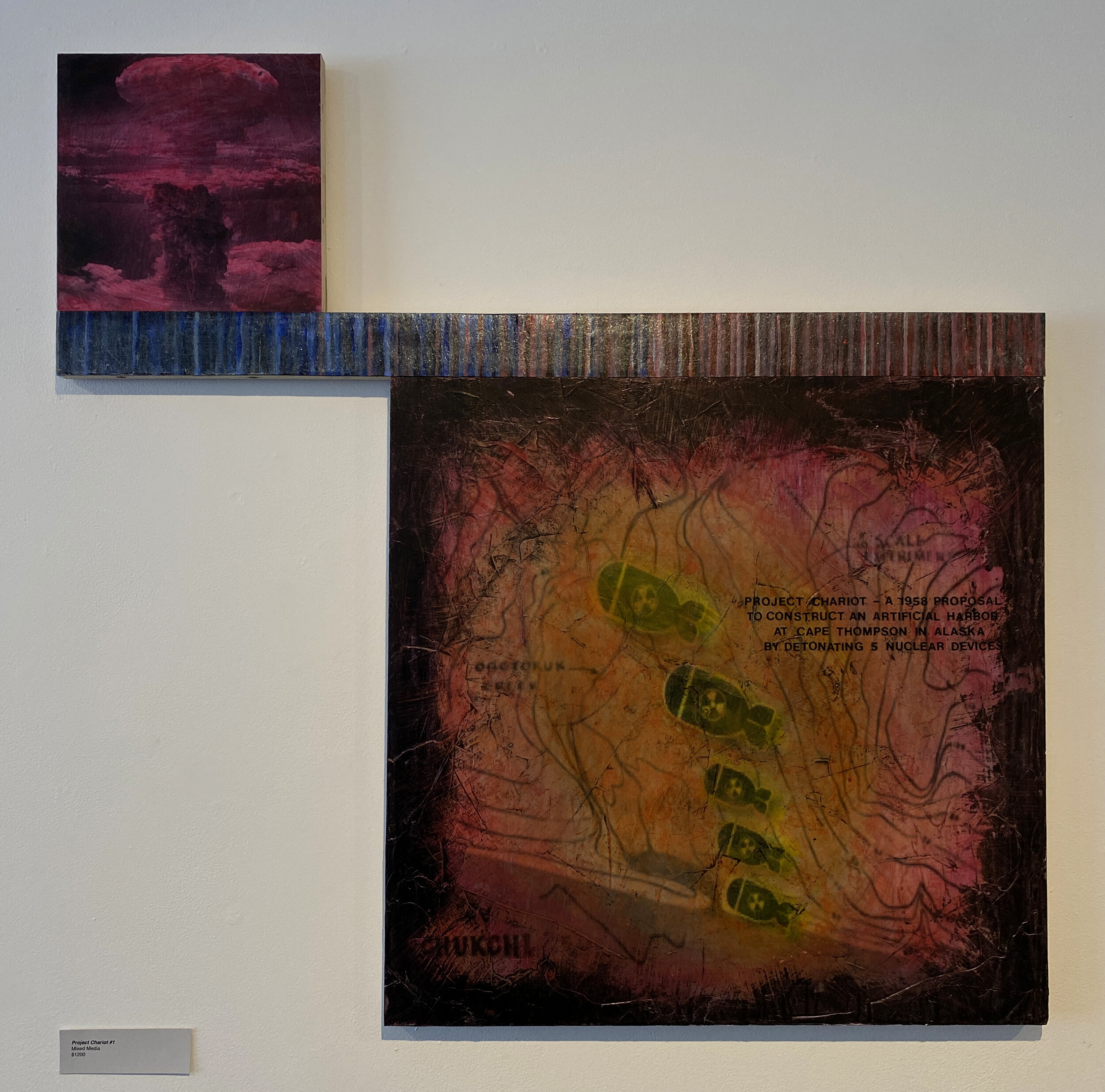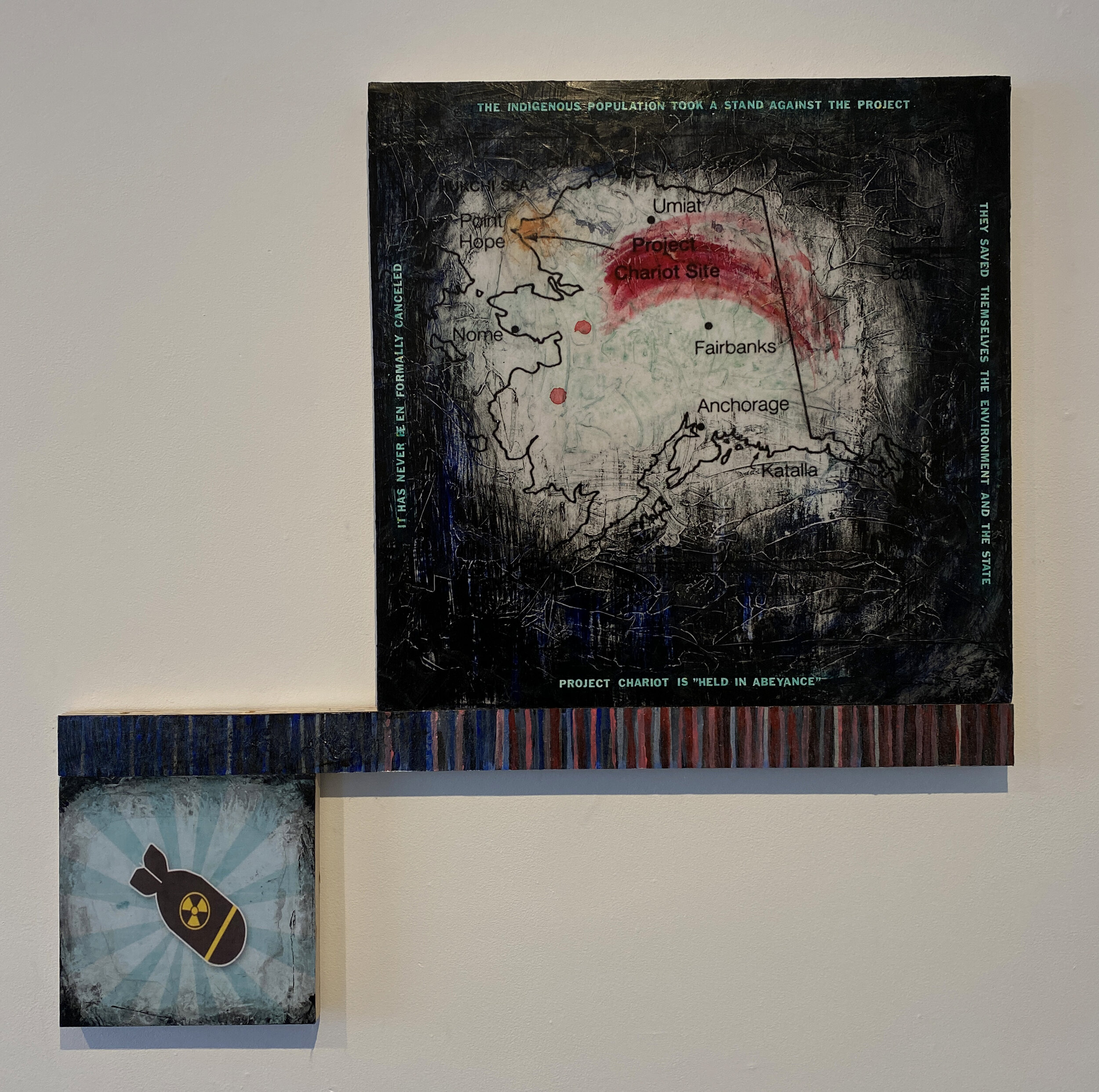NOVEMBER 2020
Three Series | Sheila Wyne
Sheila Wyne presents 3 ongoing series that explore our past, present and future connections to our changing environment.
Found and manipulated signage, create future stratifications.
Facial casts and found objects explore our current reactions.
Mixed media drawings document our past relationships with the land and current dilemmas.
Sheila Wyne is a visual artist based in Anchorage. Her studio work has been shown across the state, the Lower 48 and overseas. Her work is in permanent collections of the Anchorage, Fairbanks, Juneau and Pratt Museums. She has designed over 20 public artworks.
Wyne has also worked as a set designer with theatre companies in Alaska and the Northwest. She is a Core Member of The Light Brigade – an independent group of artists who design time-based, site-specific art interventions on the local landscape and built environment.
Wyne has been awarded a national NEA/TCG Fellowship in set design, a Rasmuson Artist Fellowship, a Boochever Fellowship and the Alex Combs Artist Award. She has also received grants from Alaska State Council on the Arts, the NASE Development Program, the Rasmuson Foundation, the Andy Warhol and Rockefeller Foundations. She has received the Governor’s Award for Individual Artist.
Artist Q&A:
Can you tell us a little about your background?
My training starts with a degree in literature rather than in visual art. This approach has provided me with a much broader exposure to theories and movements not readily apparent in visual art history. It trained me to digest information and concepts from a different perspective.
After college, I moved to Alaska where my personal interest in art began. I discovered my background worked well with how I approached art making. I continued training by taking art courses at the University of Alaska Anchorage. My choice of courses followed my own interests within the visual art as well as practical skills I desired to acquire.
I also began to get acquainted with the regional arts community. I worked for more mature artists to learn their skills and to learn the practical nature of just how people could survive as an artist in our American culture.
For the first few years, I had to move my studio 7 times. As a sculptor, this was always highly disruptive. I knew that I wanted to make Alaska my home base. My goal was ownership of a studio. Once I found the studio compound in Spenard, it became a hub for art gatherings and my community expanded.
Can you describe a little about each of the series of work on display in the gallery this month?
Ingenerare by Sheila Wyne installed in the UAA Engineering and Industry building.
The Strata Series is born from a large public artwork in UAA’s Engineering and Industry building. Typically an art process starts from small works to larger works. Here it was the opposite. I started large (Ingenerare / 12’ x 14’). I really enjoyed working on that piece, incorporating signage from our built environment. I wanted to revisit the process on a smaller scale and see what would develop. I had come back from a 21 day rafting trip through the Grand Canyon where the strata of geological time constantly surrounded me.
The Affectus Series is ongoing. Every so often, I create another ‘portrait’ that visually speaks to states of mind, disposition, feelings and mood. The horse collars are the framing device that speaks to what we are in harness to - in this case, some of our present responses to climate change.
The Drawn and Quartered Series documents some of our past choices and events. Some works expose a history of colonial neglect of the land and other species. Other works are reminders of the beauty and mystery of nature—from large natural events to the smallest species.
What led you to creating this work?
Much of these series were made during the pandemic. I’ve found the pandemic event to be a kind of warmup for a much larger, more complex event. It’s been a useful time to contemplate the much larger issue of climate change that will effect everything. Every species, every landscape.
Do you often work on multiple series at the same time?
I usually have several works going in the studio at the same time. I find it useful to be able to spin to another work when I hit a problem. This ‘pin ball’ art process allows the problem to rest in the back of my mind while I work on another piece. Usually when I then go back to the problem, I’ve found new ways to resolve it.
Typically, I don’t work on one series exclusively. However, the Strata Series is the exception to this rule. I created that series during the pandemic.
What are you working on now?
Currently I am a finalist in 2 public art opportunities. So I’m refining concepts, 3D modeling and getting estimates for construction.
Is there anything else that you would like to share with the IGCA community?
My creative work reflects a personal view that an artist’s perspective is applicable in many venues. My pursuits as an artist include visual art, public art projects, set design, neighborhood-initiated environmental design and grass roots community art support. Just as moving through a day requires different combinations of muscle and intent, so too, my various artistic pursuits require flexibility in the imaginative process.
My own studio work, the most solitary of my creative pursuits, is similar to walking backwards. I cannot directly observe my progress toward a destination. I “see” where I’ve “been” through the trail left from assembling, painting, reading, writing and conversation. This trail grows clearer as I move into the unknown. By observing these markers, I eventually sense my arrival when the last view strikes my internal eye as a destination. When successful, this artistic mode can lead me beyond my own limited cartography to a surprising landscape. But it is always risky. There are times that I never reach a destination and find myself simply wandering in the wilderness. But it is there, within this process, that I make the discoveries that can lead to what I desire. To bear witness to what cannot be said and hopefully give voice through a visual poetry to what cannot be seen.
The media I use are as wide-ranging as the scale, scope and emotional content of my pursuits. No material is off limits. Everything is available for the creative act. The key is to follow the nerve of one’s own being and look around for the material that best serves each exploration. Looking, and sometimes waiting, till the right thing or moment arrives are crucial for me. My satisfaction is to unite disparate objects. I look for visual metaphors that embody life’s journey – the search, the thresholds, the pauses for reflection, the trials and tribulations found in daily living. My instincts in art making are similar to the Medieval alchemist, an allusive hope of turning the lead of the familiar into the gold of something that transcends what we assume that we know.



